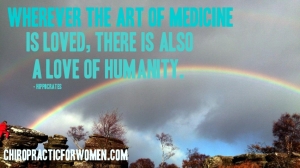 I’ve been studying (again) and most recently I’ve decided its time to read the Anatomy Trains book by Thomas Myers. (Hopefully cover to cover.) I’ve long been using the principles of Anatomy Trains and the premise that everything is connected through many pathways. I’m in the first chapter where they discuss some brilliant philosophers and researchers and this sentence really hit home;
I’ve been studying (again) and most recently I’ve decided its time to read the Anatomy Trains book by Thomas Myers. (Hopefully cover to cover.) I’ve long been using the principles of Anatomy Trains and the premise that everything is connected through many pathways. I’m in the first chapter where they discuss some brilliant philosophers and researchers and this sentence really hit home;
“Much of the manipulative work of the last 100 years, like most of our thinking in the West for at lease half a millennium, has been based on a mechanistic and reductionist model – the microscopic lens.”
It goes on for paragraphs and discusses some amazing concepts. But I just kept coming back to that idea and how our lives, and our medical care, often feel as though they have become broken down to the most specific level of concern. I’m sure you’ve heard me say it before and if you’ve been in my office, you’ve definitely heard it before, but “Everything is Connected.”
I see this concept a lot with exercises and therapy protocols. If the shoulder hurts, as therapists we address only the shoulder. If you’re getting a cold, we pump you with vitamin C and zinc. If you’re feeling anxiety, we tell you that it is a lack of exercise.
Here’s the thing. It’s all connected. If your shoulder hurts, yes, we need to treat the shoulder, but what other areas do we need to look at? The neck and the opposite hip, for starters? Are you having any anger issues or holding onto any emotional strains.
If you’re getting a cold then yes, lets help your immune system, but we should probably address why your immune system is low in the first place. How’s your stress and your sleep? Have you eaten healthy this week? What is your caffeine and sugar intake?
Anxiety? Well then we need to set up a true treatment plan with exercise, dietary changes, and likely counseling and stress management.
In school we spent a massive amount of time studying Origin, Insertion, Innervation and Action for virtually every connected muscle in the body. We discussed the fascial connections and the way that some muscles work together, and some are opposites. But what I don’t remember learning hardly at all is what happens when you put it all together. What happens when the you’re feeling anxious and your shoulder hurts? What do we address first? Or do we address it all at once?
As usual, there is no immediate answer to this mindful chatter. Just simply that in all of our continuing knowledge and our ability to see smaller and smaller parts, I’m starting to think that perhaps we need to look larger and farther. We need to grasp the idea that everything is connected, and for all the time we try to spend going deeper and more specific, we should spend equal time looking at the opposite, and larger picture.
As Always,
Keep Moving.
Dr Cate
